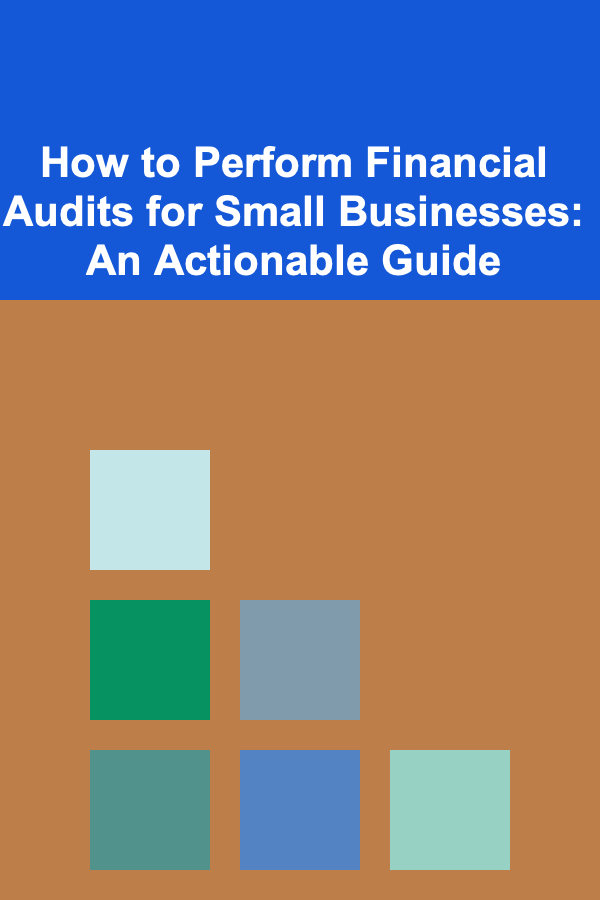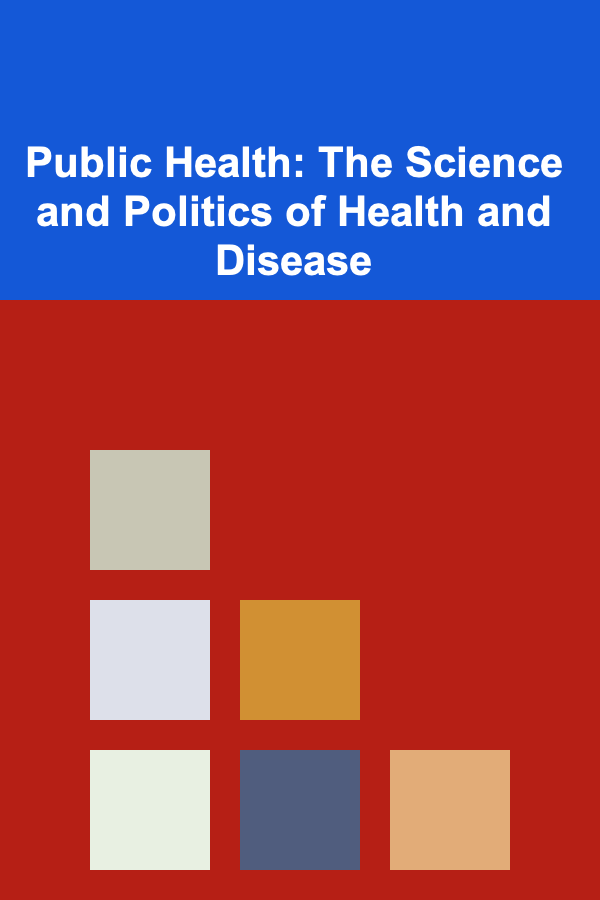
10 Tips for a Birthday Party Checklist for Children with Allergies
ebook include PDF & Audio bundle (Micro Guide)
$12.99$6.99
Limited Time Offer! Order within the next:
Not available at this time

Planning a birthday party for a child can be an exciting and joyful occasion. However, for parents and caregivers of children with allergies, the process can also be daunting. Allergies, whether food-related or environmental, pose significant risks that need careful attention. Ensuring that your child and their friends have a safe and fun celebration requires thoughtful planning, organization, and an allergy-conscious approach. By following a birthday party checklist tailored to children with allergies, you can create a memorable event without unnecessary worries.
In this article, we'll dive into 10 practical tips that will help you organize an allergy-friendly birthday party for children. These tips address food allergies, environmental sensitivities, and general safety, all while ensuring the celebration is enjoyable for everyone involved.
Know the Allergies of Your Guests
The first step in planning an allergy-friendly birthday party is understanding the specific allergies your child and their guests have. Not all children have the same allergic reactions, and it's important to get detailed information beforehand.
Tips:
- Send Out Invitations Early: When sending out party invitations, request that parents inform you of any allergies their children may have. This should include food allergies, insect sting allergies, medication allergies, and any other environmental sensitivities.
- Clarify Severity: Some allergies are mild and only cause discomfort, while others can result in life-threatening reactions (anaphylaxis). Ask parents how serious the allergies are and what steps to take in case of an emergency.
- Create an Allergy List: Create a list of all the known allergies and keep it on hand during the event. This list should be shared with all party helpers and staff if you're using outside vendors like caterers or entertainers.
Example:
Your guest list may include children with peanut allergies, gluten sensitivities, or latex allergies. Knowing this in advance will help you avoid these allergens when preparing food or selecting decorations.
Choose Allergy-Safe Foods
Food allergies are among the most common concerns for children's birthday parties. Many popular party foods contain allergens like peanuts, dairy, gluten, or soy. Instead of serving traditional snacks, you'll need to carefully consider each dish and its ingredients.
Tips:
- Avoid Common Allergens: Popular allergens include peanuts, tree nuts, dairy, eggs, gluten, soy, and shellfish. Plan your menu carefully to avoid these ingredients or offer substitutions.
- Offer Simple, Whole Foods: Opt for simple snacks like fresh fruit, veggies, rice cakes, popcorn, or allergy-safe chips. Foods that are less likely to contain hidden allergens are often a safer bet.
- Prepare Homemade Treats: Homemade cupcakes or cakes allow you to control the ingredients and avoid allergens. There are many recipes for allergen-free treats, such as gluten-free or nut-free cakes.
- Label Everything: If you are offering multiple food items, label them clearly so parents can easily identify which ones are allergen-free. This is especially helpful for guests with multiple allergies or sensitivities.
Example:
If a child has a peanut allergy, ensure that no snacks or treats contain peanuts or have been processed in facilities that handle peanuts. Consider using sunflower seed butter as a safe alternative to peanut butter in sandwiches.
Be Mindful of Cross-Contamination
Even if you're using allergy-friendly ingredients, cross-contamination is a serious risk, particularly when handling foods that contain allergens. A simple touch or shared utensil can cause a reaction in allergic children.
Tips:
- Separate Allergen-Free Foods: Store allergy-friendly foods separately from those that contain allergens. Keep them in different containers, and use different utensils when preparing and serving.
- Clean Surfaces Thoroughly: Before starting food prep, clean all surfaces, including tables and counters, to remove traces of allergens. Wipe down cutting boards, utensils, and any other surfaces that will come in contact with food.
- Use Separate Cooking Equipment: If possible, use separate cooking equipment for allergen-free foods. For example, use a separate pan for cooking gluten-free foods to avoid contamination.
Example:
If you're serving both gluten-free and regular cupcakes, consider using two different trays or containers and keep them clearly labeled. This ensures no accidental mixing of foods.
Choose Non-Allergenic Decorations
Decorations can often include materials that may trigger allergies. For children with respiratory issues, latex balloons or certain scented items can be a significant concern. It's crucial to consider the environment where the party will take place, especially when choosing decorations.
Tips:
- Avoid Latex Balloons: Latex is a common allergen for many children, and it can cause serious reactions, particularly with inhalation. Opt for Mylar (foil) balloons instead, which are safe for most children.
- Skip Scented Items: Strong scents from candles, air fresheners, or flowers can trigger allergic reactions in sensitive children. Stick with unscented items and simple decorations.
- Keep Decorations Allergy-Free: Use non-toxic, allergy-safe materials for decorations, such as fabric banners, paper streamers, and balloons made from non-latex materials.
Example:
If you're decorating with flowers, be mindful of any children who may have pollen allergies. Opt for artificial flowers or decorations that don't release allergens into the air.
Check for Allergy-Free Entertainment
While food and decorations are critical, you also need to consider the entertainment and activities at the party. Some activities might inadvertently expose children to allergens, such as those involving craft materials or animals.
Tips:
- Avoid Craft Materials with Allergens: Many craft supplies, like paints or glues, can contain allergens or irritating chemicals. Look for hypoallergenic and non-toxic alternatives.
- Pet-Free Zone: If you have pets at home, be mindful that some children may have allergies to animal dander. Consider keeping pets in another room during the party, or inform parents ahead of time if animals will be present.
- Outdoor Games: If you're planning outdoor games, consider the environment. For example, pollen levels may be high during certain seasons, triggering allergic reactions. Try to monitor the pollen count and schedule the party accordingly.
Example:
If you're planning an arts-and-crafts activity, ensure that the materials are non-toxic and free of common allergens. For example, choose hypoallergenic paints or washable markers that are safe for children.
Prepare an Allergy-Safe Party Favor Bag
Party favors are a common tradition at birthday parties, but for children with allergies, the contents of a typical favor bag may not be safe. Ensure that all items given as party favors are allergy-friendly.
Tips:
- Avoid Food-Based Favors: While candy and treats are common party favors, they can be a source of allergens. Opt for non-food items like stickers, small toys, or books instead.
- Check Ingredients: If you plan to include food items in the favor bags, such as lollipops or chocolates, make sure that they are free from common allergens and have clearly labeled ingredients.
- Label Favor Bags: If necessary, label favor bags to indicate whether any allergens are present, such as gluten or dairy.
Example:
Instead of giving out candy, you might consider small toys, puzzle books, or mini art supplies. These items can be just as fun and are much safer for children with allergies.
Communicate Allergy Plans with All Helpers
If you're hiring outside help, such as a party planner, caterer, or entertainer, it's essential to communicate your child's allergy needs clearly. This ensures that everyone involved in the party is aware of the precautions to take.
Tips:
- Share Allergy Information: Provide your helpers with a list of known allergies and sensitivities. Ensure that caterers are aware of the need for allergen-free meals and that entertainers understand the limitations regarding activities.
- Give Clear Instructions: Be specific about what is and isn't allowed at the party. For instance, if you're hiring a face painter, make sure they only use hypoallergenic makeup products.
- Establish Emergency Procedures: Share emergency plans with all staff. This includes knowing where the nearest pharmacy is, how to use an epinephrine pen (if necessary), and having an emergency contact list readily available.
Example:
When hiring a caterer, make sure they have experience in preparing allergen-free meals and are aware of cross-contamination risks. It's essential to make your requirements clear to avoid any misunderstandings.
Create an Emergency Action Plan
Although you take every precaution, accidents can happen. It's essential to have an emergency action plan in place in case of an allergic reaction during the party.
Tips:
- Have Epinephrine on Hand: If your child or any guest has a severe allergy, make sure an epinephrine auto-injector (EpiPen) is available at the party. Ensure that someone at the event knows how to use it properly.
- Know the Symptoms: Familiarize yourself with the symptoms of an allergic reaction, such as hives, difficulty breathing, swelling, or vomiting. If any of these signs occur, take immediate action.
- Emergency Contact List: Keep an emergency contact list with the phone numbers of parents, pediatricians, or other emergency contacts in case a reaction occurs.
Example:
If a guest has a peanut allergy and accidentally consumes a peanut, having an epinephrine auto-injector nearby can be life-saving. Ensure that the party is staffed with individuals who know how to respond in an emergency.
Consult with the Birthday Child's Doctor
Before planning the party, it's always a good idea to consult your child's doctor or allergist. They can provide guidance on managing allergies at social events, as well as tips on what precautions to take.
Tips:
- Ask for Specific Advice: Your child's doctor can offer tailored advice based on their specific allergies. This can include medications, emergency procedures, or specific products to avoid.
- Review Allergy Action Plans: Ensure that you understand the allergy action plan for your child and have a clear understanding of when to use medications or seek medical attention.
Example:
If your child has a severe milk allergy, the doctor may recommend carrying an antihistamine or other medications in addition to the epinephrine auto-injector.
Stay Calm and Positive
Finally, as a parent, it's important to stay calm and positive. Children with allergies need to feel safe and confident at their party, and your calm demeanor will set the tone for the event.
Tips:
- Set the Right Mood: Reassure your child and their friends that the party will be fun and safe. Be a positive role model by staying relaxed and prepared for any situation.
- Focus on Fun: Remember that a birthday party is about having fun and celebrating. While allergies are a concern, they don't need to overshadow the joy of the occasion.
Example:
If a guest's allergy is triggered, remain calm and handle the situation as quickly and efficiently as possible. Your confidence will help ensure that the party continues smoothly.
Conclusion
Planning a birthday party for children with allergies requires extra care, preparation, and attention to detail. However, with the right approach, it's entirely possible to host a celebration that is both fun and safe. By following these 10 tips, you can create an environment where children with allergies can enjoy themselves without worry. Remember, thoughtful planning and communication with guests and helpers are key to ensuring the safety and success of the party. With these precautions in place, your child's birthday will be a day to remember for all the right reasons!

How to Build a Checklist for Disaster Preparedness at Work
Read More
How to Keep Essentials Accessible During the Moving Process
Read More
How to Perform Financial Audits for Small Businesses: An Actionable Guide
Read More
How to Understand Climate Tipping Points
Read More
Public Health: The Science and Politics of Health and Disease
Read More
How to Navigate Volcanic Landscapes
Read MoreOther Products

How to Build a Checklist for Disaster Preparedness at Work
Read More
How to Keep Essentials Accessible During the Moving Process
Read More
How to Perform Financial Audits for Small Businesses: An Actionable Guide
Read More
How to Understand Climate Tipping Points
Read More
Public Health: The Science and Politics of Health and Disease
Read More